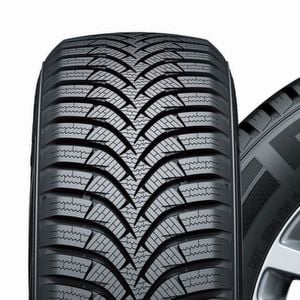Last Updated on 19.11.2021 by hrushetskyy
Tire care plays an important role to keeping your car on the road. These may include:
- Looking for tread wear to its minimum depth
- Tire damages such as punctures, cuts, cracks, bulges, bubbles or abuse
- Suspension and engine problems such as rattling
- Tire air pressure (over-inflation or under-inflation)
- Tire balance
- Tire rotation and alignment
- Vehicle and tire loading capacity
Here are the reasons why it is important to take care of your car’s tires:
Saves you time
Whenever you anticipate replacements or repairs, maintenance saves you time from a ‘snowball effect’ that comes with using damaged tires.
Maintaining the tire’s air pressure prolongs its integrity. Here are some key points to look into:
- Over-inflating and under-inflating tires can increase its wear and tear. Let’s take for example a car that is under-inflated by 20%. This is then translated to a 12,000-mile decrease from a supposedly 60,000 guaranteed mileage when using a well-conditioned set of tires.
- Tire rotation is another way to prolong your tire’s usage. The wear and tear of your front and rear axles have different durations. By using this method, you will keep the wear and tear proportionate for each tire and minimize the need for constant replacements.
Fuel efficient
One of the reasons why cars burn so much fuel is because of under-inflated tires. The car meets more resistance when tires are not inflated well, thus causing the engine to work more to keep it mobile.
Keeping you safe on the road
Your tires are the only thing from your car that has direct contact on the road. For your safety, here are some things you can do to ensure optimum tire care:
- Look for some form of wear. Regular checking of your vehicle’s tire can help you anticipate any maintenance that a professional mechanic can assess. This way, you are avoiding future accidents that happen with tire wear. It is best to have your tires check at least once a year.
- Inspect your tire’s air pressure. Whenever you have incorrect tire pressures, your vehicle will have to adjust continuously. It could be hard to maneuver your car’s braking and handling system, especially on wet roads. Checking for under-inflated tires causes your engine to work more, builds up the heat in the system and eventually leads to engine failure. When you maintain the tires pressure, this keeps you safe while traveling on the road.
- Know your car’s load capacity. If your vehicle carries more than its maximum capacity, chances are your car’s tire will be carrying the burden and can cause it to burst eventually.
- Never drive at a high speed. Too much friction causes the tires to wear faster. Not only that, this causes the tires to deflate faster making your car work harder to keep it moving. When a tire suddenly bursts, this causes you to lose control of your vehicle which can lead to an accident.
- If there’s damage to your tires, use your spare tire and have it checked by your local mechanic for maintenance or repair.
How to Assess My Tire
Tire care also entails proper assessment of your tires to help you identify potential problems that may arise during your ride. Here are some of the things to look at when checking your tires:
Flat tire
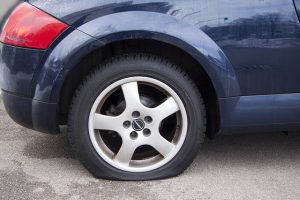
Any punctures that cut about 1/4” within the thread can still be repaired by your local mechanic. In the case that local car shop is not within reach, change it with your spare tire until you get to an establishment to have your tire assessed. Or you can use run-flat tires to get to the repair shop.
Soft tire
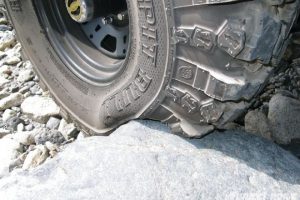
It could be that your tire is under-inflated and will require added pressure to get it back up to shape. The required air pressure (in psi) varies from vehicle to vehicle. It’s best to consult your car’s manual to see what the recommended psi is for your tires.
Unusual tire wear on both sides
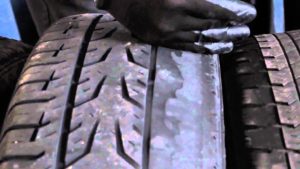
This is due to under-inflation and can lead to flats and tire blowouts. You’ll notice there’s a reduction of thread on the outer portions of the tire. It’s best to get the proper psi pressure as soon as possible. If you’re unsure how to go about it, you can have a professional tire dealer assess the tires.
Tire wear that’s more dominant on the center is due to over-inflation. In this case, the center tire has more contact on the road than the edges, causing it to wear. Check with your car’s manual as to the appropriate air pressure or have it adjusted using a tire pressure gauge before your car hits the road.
Indentation
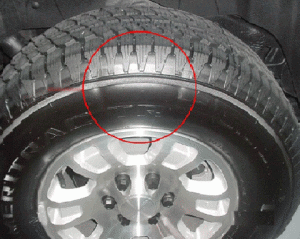
These are natural features of a tire that will not cause any problems with your car’s running performance. Tires usually have one or two fabric cords within the sidewall and are parallel with each other.
Bulbs or bubble

When you see a ‘bubble’ or a circular bulge on your tire, this will require replacement. Any bulges indicate that your tire’s cords are damaged and cannot be repaired further. Change your current tire with your spare and look for an authorized tire dealer to replace it with a new one. unusual
How Can I Gauge the Visual Condition of My Tires?
Proper tire care also mean inspecting for damages, punctures, deep scratches and the likes regularly to anticipate tire repair or replacement. Other unusual indications may include cuts, bulges and some tears that may be due to driving on rough terrains. The best way to check your tires is when you have your car recalibrated for air pressure. If you’re not sure how to move forward from this assessment, you can check with your local tire dealer for further analysis of the state of your car’s tires.
It is best to assess tires before taking your vehicle out on the road where it’s in contact with hot pavements. Unusual damages aside from thread wear may require more than air pressure check. Have a local mechanic check on tire alignment and mechanical issues. It might also be best to let the professionals assess as to the rotation of the car tires.
Tire Care Checklist
A simple monthly tire check-up can go a long way for your vehicle. Here are some items you’ll need to check:
Proper air pressure
You should know vehicle’s prescribed air pressure to keep your car from having over and under-inflated tires. To keep your car moving at its optimum, it is best to have tire’s air pressure checked at least once a month when it’s cool using an air gauge.
Extreme air pressures inside your tires can accelerate the wear of your tires. Not only that, it also makes your car do more work to keep it mobile. Once this happens, your car will use more fuel.
If you are experiencing unusual car vibrations and rattling, this may be due to your tire’s improper alignment or other condition such as cuts, punctures or flat tire. It’s a snowball effect so this simple act of checking tires can actually save you more mileage in the long run. Go to your nearest tire dealer and let the professionals do further check-up on your vehicle.
Excessive spinning
This is a common situation where your car is stuck in the mud, ice or snow. Excessive spinning causes the tire to wear out with friction, over-heating, and eventually irreparable damage. Slowly move your car forward and backward until the vehicle is free from the spot.
Look for tire wear and tear
Tire wear is different from tearing. You can look in the tire’s thread. Tire manufacturers have embedded a wear indicator that looks like smooth banks located along the tire’s grooves. It is then estimated that the wear has reached a 1.6mm thread depth. Continuing to use tires under this condition makes your car susceptible to punctures when you’re driving.
Vehicles constantly running in rough terrains can cause a lot of damages to the tires. Some common tire damages are penetrations, bulges, tread wear and scallops to name a few. These types of damages will require professional help. If you happen to experience any tire damages while driving, it is best to have it changed with a professional mechanic.
Keep in mind that tires need to have uniform sizes and air pressure according to the manufacturer’s instructions. Never mix different sizes of tires on the same axle as this can cause problems on your vehicle’s handling and braking system. Also, look into the car’s load capacity located on the tire’s sidewall. Never fit tires with less than the loading capacity indicated in the original equipment provider of the vehicle. Your professional tire dealer would need to replace your vehicle’s tires with equal or greater capacity accordingly. Never use a standard load (SL) tire for an extra load (XL) one and vice versa.
When is it Time to Replace My Own Tires?
Most tire manufacturers provide details on the tire’s lifespan and duration of use. It is expected that once the tire has already reached its optimum use, it needs to be replaced. Since your vehicle’s performance depends on your tires, here are some ways to identify when you’ll need to replace your tires to keep your vehicle performing at its best.
The foremost function of the treading on your tire is to avert water away from going underneath the tire to provide better traction when it’s mobile. This is to keep your car from skidding when the roads are wet.
If you notice, there are small bridges found in between the treads. With tire wear, you will see that these bars will become flushed that has an even surface to that of the tread. The smooth surface is an indicator that the tire has been worn and has depleted all the tread. By continuing using this, your vehicle will be susceptible to skidding and road accidents.
If you are unsure if about the treading measurement, you can do a ‘penny test’. Wedge the penny in center of the tread (Lincoln’s head should be facing you). If you see the top portion of Lincoln’s head, your tires needed to be replaced. If you see some of the hair on top of Lincoln’s head, it doesn’t need replacement yet but you will need to look for a new replacement soon.
You can see the legal requirements imprinted on the tire’s sideways. To ensure safety, the common tread wear should only be until 1/16”.
If you cannot see any hair or Lincoln’s head, then your tire is still good to go. Professional tire technicians have a device that can accurately gauge the tread of your tire. But these may also be purchased in your local auto parts shops and can show you how to use it.
Note any irregularities in the tread wear. This could mean another check with your mechanic to assess your car’s wheel alignment and/or the need to rotate tires. Uneven tire wears is a signal for you to have it checked with your local tire technician. If you suspected that the tire’s wear seems accelerated, you need to have it assess with a mechanic to see if there’s a problem with your suspension system. To lengthen your tire’s usability, rotate the tires by pairs (front pairs to the back and vice versa).
What Should I Know About Inflation Pressure
Finding the right air pressure for your tires is essential for your safety and comfort. Somewhere along your tire’s sidewall is embedded information about it from the manufacturer.
It should you tell you the cold pressure of your tire’s maximum load capacity. It is ideal to fill your tire’s air pressure early in the morning or after 3 hours after you’ve turned off your car from driving.
Usually, tires have a maximum psi of 30 to 32. There’s also a sticker near your vehicle’s door jam or your owner’s manual indicating the recommended air pressure. The psi for every tire varies so if you’re unsure it’s best to consult your professional tire technician to see what level will work best for your vehicle.
When you place your car’s psi to its maximum level, the consequences would be:
- You may feel some changes in your handling system. There would be some superior cornering and some unfamiliarity with your braking threshold. With a quick corner, you might feel your car’s back end sliding out.
- There would be an accelerated wear on your tire, particularly on the center portion. This decreases our car’s ability to get traction and this often causes a blowout when you’re on the road.
Under-inflated tires can also cause inefficient fuel use since your car needs to work twice as hard to keep it moving. Not only that, you may see that your tire wears just as fast and can cause tire overloading.
There are a few exceptions when it comes changing your tire’s air pressure that would work well with the terrain that you’d be driving on. Lowering tire pressure can help you drive more efficiently in deep snow and sand environment. As for beach driving, there are some places that mandate tires to have lowered air pressure. However, the challenge comes when you hit on the highway again so take this exception with caution. Bring a portable air pressure machine in these cases.
Winter tires or snow tires may recommend higher air pressure to make it more flexible when moving through snow. Since winter temperatures won’t be heating up the tires, a 3 to 5 psi increase would act like a regular air pressure. Ask your professional tire technician how to go about switching air pressure for this type of season to give your car the needed boost.
Best Tire Care Products
Your car needs the much-needed tire care to ensure it performs well on the road. Here are some of the best products to help you get started.
Maintain your tire’s integrity in every type of weather. It preserves the aesthetic shine of your tires even with heavy rain. It also prevents cracking and drying throughout.
Compared with traditional tire dressing, this one doesn’t require rubbing or wiping. It lasts longer compared since it doesn’t contain water or other surfactants that usually evaporates after some time.
It gives an added protection from a regular tire dressing with its UV protector component. This tire dressing contains a unique formula that sticks to the tires for days.
It shines and protects the tires from the harsh heat and rainy weather. Sonax contains a silicon-rich formula to give a semi-gloss effect to keep tires from cracking and drying.
Car owners should be adamant to keep check of their tires to have it performing well throughout the year. Given proper knowledge, maintenance, repair or replacement should be other items added to your checklist in assessing your car’s overall performance. It will save you time in repairs, anticipate tire replacements and even save fuel if you have a sturdy and efficient set of tires. Be sure to ask your local tire dealer for the best tires for your vehicle to avoid downtimes and drive safely on the road.

